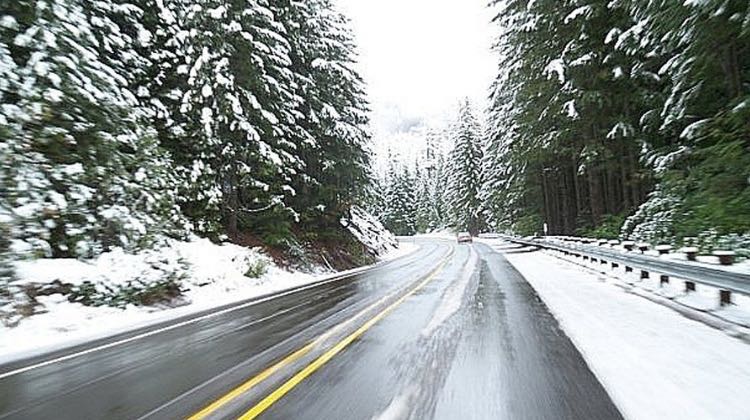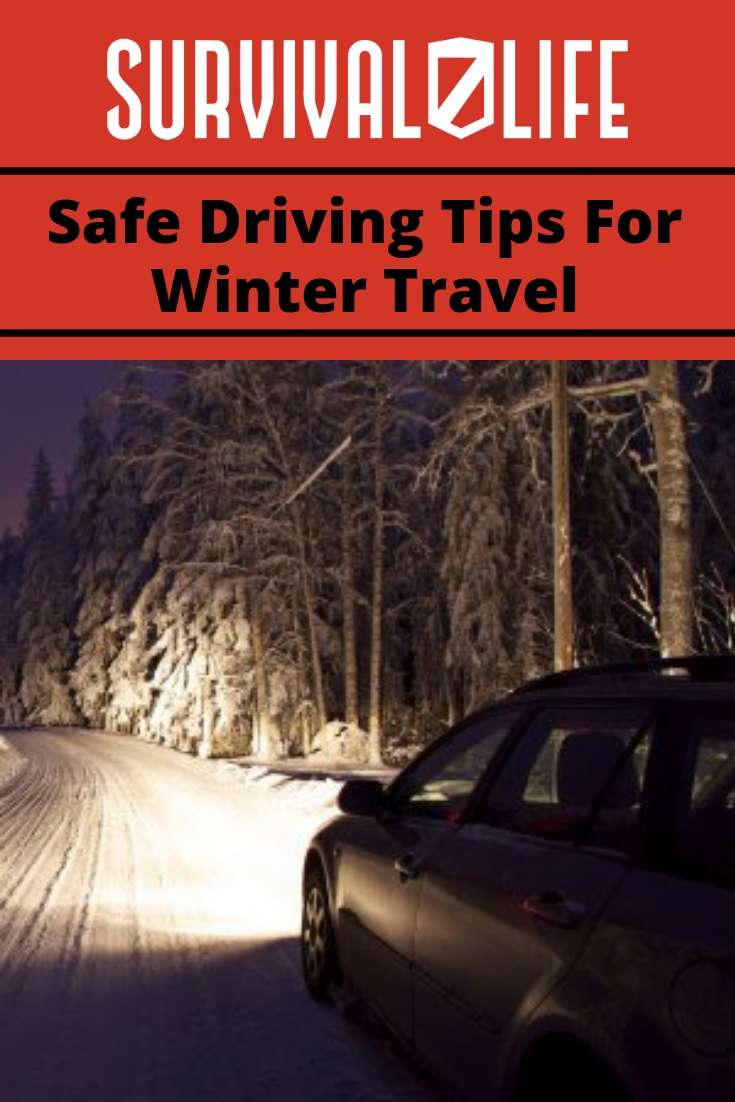Family
Safe Driving Tips For Winter Travel

It’s that time of year again.
In the next few weeks, millions of Americans will be flooding the streets in their holiday travels.
I will be joining them, as always, to head down to see my Grandparents and pack on a few pounds.
I don’t foresee any trouble getting there, but you never know what’s can happen out on the open road.
Check out these tips for winter driving
Follow these to make sure you get where you need to go and make it back safely this year.
(Please note I take no credit for these, they are all directly from the AAA website.)
Severe weather can be both frightening and dangerous for automobile travel. Motorists should know the safety rules for dealing with winter road emergencies. AAA reminds motorists to be cautious while driving in adverse weather. For more information on winter driving, the association offers theHow to Go on Ice and Snow brochure, available through most AAA offices. Contact your local AAA club for more information.
AAA recommends the following winter driving tips:
- Avoid driving while you’re fatigued. Getting the proper amount of rest before taking on winter weather tasks reduces driving risks.
- Never warm up a vehicle in an enclosed area, such as a garage.
- Make certain your tires are properly inflated.
- Never mix radial tires with other tire types.
- Keep your gas tank at least half full to avoid gas line freeze-up.
- If possible, avoid using your parking brake in cold, rainy and snowy weather.
- Do not use cruise control when driving on any slippery surface (wet, ice, sand).
- Always look and steer where you want to go.
- Use your seat belt every time you get into your vehicle.
Tips for long-distance winter trips:
- Watch weather reports prior to a long-distance drive or before driving in isolated areas. Delay trips when especially bad weather is expected. If you must leave, let others know your route, destination and estimated time of arrival.
- Always make sure your vehicle is in peak operating condition by having it inspected by a AAA Approved Auto Repair facility.
- Keep at least half a tank of gasoline in your vehicle at all times.
- Pack a cellular telephone with your local AAA’s telephone number, plus blankets, gloves, hats, food, water and any needed medication in your vehicle.
- If you become snow-bound, stay with your vehicle. It provides temporary shelter and makes it easier for rescuers to locate you. Don’t try to walk in a severe storm. It’s easy to lose sight of your vehicle in blowing snow and become lost.
- Don’t over exert yourself if you try to push or dig your vehicle out of the snow.
- Tie a brightly colored cloth to the antenna or place a cloth at the top of a rolled up window to signal distress. At night, keep the dome light on if possible. It only uses a small amount of electricity and will make it easier for rescuers to find you.
- Make sure the exhaust pipe isn’t clogged with snow, ice or mud. A blocked exhaust could cause deadly carbon monoxide gas to leak into the passenger compartment with the engine running.
- Use whatever is available to insulate your body from the cold. This could include floor mats, newspapers or paper maps.
- If possible run the engine and heater just long enough to remove the chill and to conserve gasoline.
- Make sure that you have an emergency kit packed and ready in your car. Check out the one I made for my friend on his last road trip.
Tips for driving in the snow:
- Accelerate and decelerate slowly. Applying the gas slowly to accelerate is the best method for regaining traction and avoiding skids. Don’t try to get moving in a hurry. And take time to slow down for a stoplight. Remember: It takes longer to slow down on icy roads.
- Drive slowly. Everything takes longer on snow-covered roads. Accelerating, stopping, turning – nothing happens as quickly as on dry pavement. Give yourself time to maneuver by driving slowly.
- The normal dry pavement following distance of three to four seconds should be increased to eight to ten seconds. This increased margin of safety will provide the longer distance needed if you have to stop.
- Know your brakes. Whether you have antilock brakes or not, the best way to stop is threshold breaking. Keep the heel of your foot on the floor and use the ball of your foot to apply firm, steady pressure on the brake pedal.
- Don’t stop if you can avoid it. There’s a big difference in the amount of inertia it takes to start moving from a full stop versus how much it takes to get moving while still rolling. If you can slow down enough to keep rolling until a traffic light changes, do it.
- Don’t power up hills. Applying extra gas on snow-covered roads just starts your wheels spinning. Try to get a little inertia going before you reach the hill and let that inertia carry you to the top. As you reach the crest of the hill, reduce your speed and proceed down hill as slowly as possible.
- Don’t stop going up a hill. There’s nothing worse than trying to get moving up a hill on an icy road. Get some inertia going on a flat roadway before you take on the hill.
- Stay home. If you really don’t have to go out, don’t. Even if you can drive well in the snow, not everyone else can. Don’t tempt fate: If you don’t have somewhere you have to be, watch the snow from indoors.
Check out more great tips on AAA’s website
Do you have any safe driving tips that you would like to share? Leave a comment below and let us know.

Winter Survival Kit
Winter Storms | How to Stay Warm and Survive
How To Arrive Safely: Winter Driving
-

 Do It Yourself7 months ago
Do It Yourself7 months agoParacord Projects | 36 Cool Paracord Ideas For Your Paracord Survival Projects
-

 Do It Yourself9 months ago
Do It Yourself9 months agoHow To Make Paracord Survival Bracelets | DIY Survival Prepping
-

 Do It Yourself9 months ago
Do It Yourself9 months ago21 Home Remedies For Toothache Pain Relief
-

 Do It Yourself10 months ago
Do It Yourself10 months agoSurvival DIY: How To Melt Aluminum Cans For Casting
-

 Exports8 months ago
Exports8 months agoAre Switchblades Legal? Knife Laws By State


Glenda
November 19, 2013 at 5:52 PM
If you are stranded and getting desperate deflate and then burn your spare tire. It will put out a lot of heat (good for you), and a lot of black smoke that can be seen for miles. When we lived in Alaska we kept a small can of solid camp fuel in the car just in case as tires are hard to get burning. We never needed it but better safe than sorry.
James
December 13, 2013 at 5:01 PM
When I was stationed in a remote area while an Air Force cop, we were required to carry a blanket , matches & a candle in our vehicles. the candle serves multi purposes as it will provide some warmth in a confined space & serves as a canary in a coal mine when your engine is running. (let’s you know when oxygen is low. I also would carry a folding shovel ( or a sandbox shovel if that’s all you have)& a multi tool or pocket knife.
Lloyd Progroup
January 29, 2014 at 12:14 PM
Atlanta isn’t ready for snow storms.
Yesterday Winter Storm Leon dropped 2.5 inches and brought the city to its knees.
Thousands of motorists were stranded. These tips would have come in handy BEFORE hand!
Pingback: One Mans Quick Thinking Saves Lives - Survival Life | Preppers | Survival Gear | Blog - Survival Life | Preppers | Survival Gear | Blog
Pingback: Holiday Shopping Safety Tips: How To Prevent Purse Snatching
Pingback: Holiday Shopping Safety Tips: How To Prevent Purse Snatching | camping